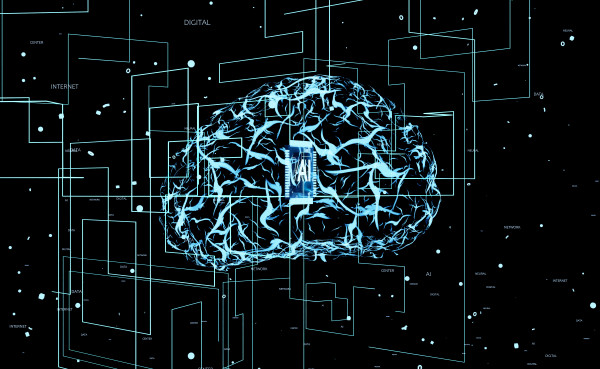As we step into 2025, the manufacturing industry is undergoing a rapid digital transformation, fueled by advanced technologies and strategic IT solutions, such as those of STL Digital. From SaaS-based solutions to Enterprise Applications and Product Engineering, the trends shaping next-gen manufacturing reflect a shift toward more agile, intelligent, and sustainable production models. Here’s a look at the top trends revolutionizing the manufacturing sector this year.
Embracing Hyperautomation and Smart Factories
Hyperautomation, powered by IT solutions and AI-driven analytics, is enabling smart factories to automate not only physical processes but also decision-making workflows. These factories use IoT devices, robotics, and machine learning to minimize downtime and enhance productivity.
Smart Factory Automation in Action
Smart factory automation integrates digital and physical systems to create a connected, adaptive manufacturing environment. Sensors, AI, and robotics work together to monitor conditions in real time, automatically adjust processes, and maintain high-quality output. This leads to reduced human error, faster cycle times, and significant cost savings.
The Rise of Fully Autonomous Manufacturing Floors
Fully autonomous production lines are becoming a reality, with robotics handling end-to-end workflows—from materials handling to final assembly. These smart systems work 24/7, drastically increasing throughput while reducing labor costs and error rates.
MES and SCADA Systems in Modern Automation
Manufacturing Execution Systems (MES) and Supervisory Control and Data Acquisition (SCADA) systems are becoming integral to smart factory setups. These tools allow real-time data capture, monitoring, and control, which is essential for predictive and prescriptive analytics.
AI-Enabled Operational Intelligence
AI-driven Analytics help manufacturers make better real-time decisions by processing data from every corner of the production floor. These systems identify inefficiencies, forecast demand, and suggest improvements, supporting the ongoing evolution of the autonomous factory.
Role of Digital Workflows in Factory Coordination
Digital workflows powered by SaaS-based solutions help streamline cross-functional coordination—from production to quality checks and logistics. Integration of IoT with Enterprise Applications ensures traceability and transparency across operations.
Revolutionizing Operations with SaaS-Based Solutions
SaaS-based solutions are becoming a backbone of modern manufacturing by offering scalable, cloud-native platforms for operations, ERP, and supply chain management. Manufacturers are moving away from legacy systems to more flexible, cost-efficient solutions.
Enhancing Uptime with Predictive Maintenance
Advanced IT services now include predictive maintenance tools that reduce machine failures using real-time data. AI and machine learning algorithms analyze usage patterns to predict equipment failures before they happen, ensuring uninterrupted production.
Creating Value with Digital Twins and Virtual Simulation
Digital twins—virtual replicas of physical assets—are being used extensively in Product Engineering to simulate performance, optimize design, and reduce prototyping costs. This approach improves time-to-market while maintaining high-quality standards.
Driving Sustainability Through Green Manufacturing
With climate responsibility taking center stage, sustainability is a core priority. Smart IT solutions monitor energy usage, emissions, and waste to help factories meet environmental standards while reducing operational costs.
Transforming Manufacturing with Edge Computing and 5G
The convergence of edge computing and 5G is enabling faster data processing closer to production lines. This low-latency environment is crucial for real-time analytics, quality assurance, and remote operations in advanced manufacturing.
Human-Robot Collaboration: A New Era
Collaborative robots (cobots) are transforming shop floors by working alongside human workers. This trend boosts efficiency and allows IT services to create safer, ergonomic, and more responsive production environments.
Smarter Supply Chains with AI
AI is revolutionizing supply chain management by predicting disruptions, automating procurement, and enhancing demand forecasting. These innovations are part of broader IT solutions aimed at creating resilient supply chains.
Defending Digital Infrastructure: Cybersecurity in Focus
As digitization grows, so does the risk of cyber threats. Modern IT services are prioritizing cybersecurity frameworks tailored to protect critical infrastructure, sensitive data, and intellectual property.
Additive Manufacturing: Customization at Scale
3D printing or additive manufacturing is enabling mass customization. With support from Enterprise Applications and smart design software, manufacturers can now produce personalized goods with greater efficiency and less waste.
Quality Control Through AI and ML
AI-driven visual inspection systems are now capable of identifying microscopic defects in real time, reducing waste and improving product quality. Machine learning continuously improves accuracy and adapts to production changes.
Industrial IoT: The Backbone of Connected Manufacturing
The integration of Industrial Internet of Things (IIoT) enables connected operations, remote monitoring, and efficient asset management. IIoT provides real-time visibility across manufacturing lines and supply chains.
Digital Thread: End-to-End Product Intelligence
A digital thread connects every stage of a product’s lifecycle, from design to disposal. This integration improves traceability, speeds up compliance, and enables proactive decision-making through data sharing.
Intelligent ERP: The Future of Business Intelligence
Enterprise Resource Planning systems are evolving with AI and analytics to offer intelligent dashboards, real-time insights, and self-service automation. These innovations support agile decision-making in fast-paced environments.
Cloud Collaboration in Global Operations
With the rise of remote teams, cloud-based collaboration platforms are being integrated into manufacturing workflows. These tools enable seamless communication between design, engineering, and production teams globally.
Market Outlook: Key Statistics
According to Statista, the manufacturing market spans diverse sectors like medical devices, automotive, consumer goods, and industrial services. It plays a vital role in global economic health, job creation, and technological advancement.
Statista also projects the value added in the manufacturing market to reach US$14.34 trillion in 2025, with a CAGR of 1.46% (2025–2029). The value added per capita is expected to amount to US$2.01k, and the value-added margin is projected at 28%.
STL Digital: Enabling the Future of Manufacturing
STL Digital is at the forefront of enabling these transformations. Through advanced IT solutions, SaaS-based services, and next-gen Enterprise Applications, STL Digital empowers manufacturers to innovate and scale operations efficiently. Discover how STL Digital is transforming the manufacturing industry with cutting-edge technologies and digital strategies.



